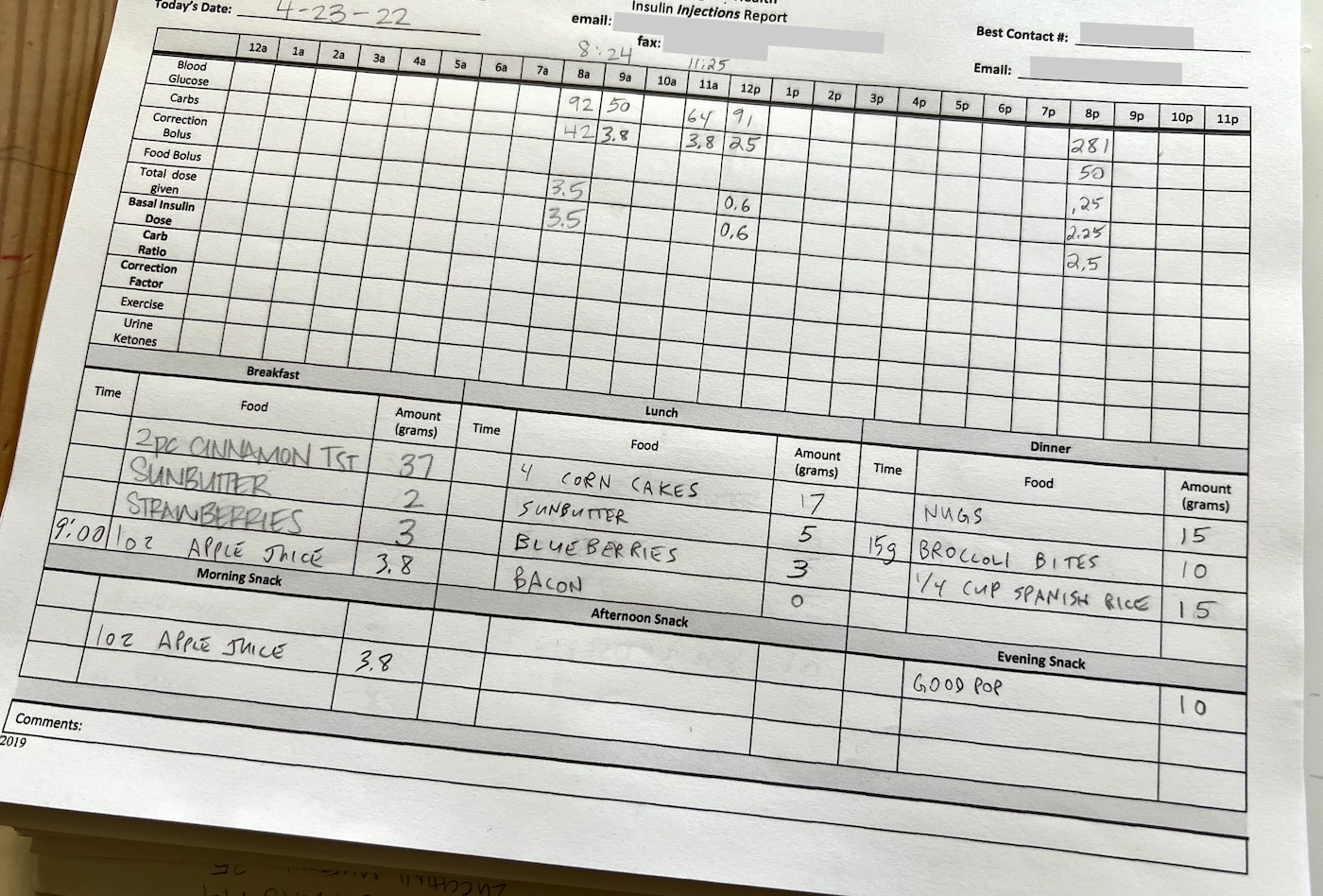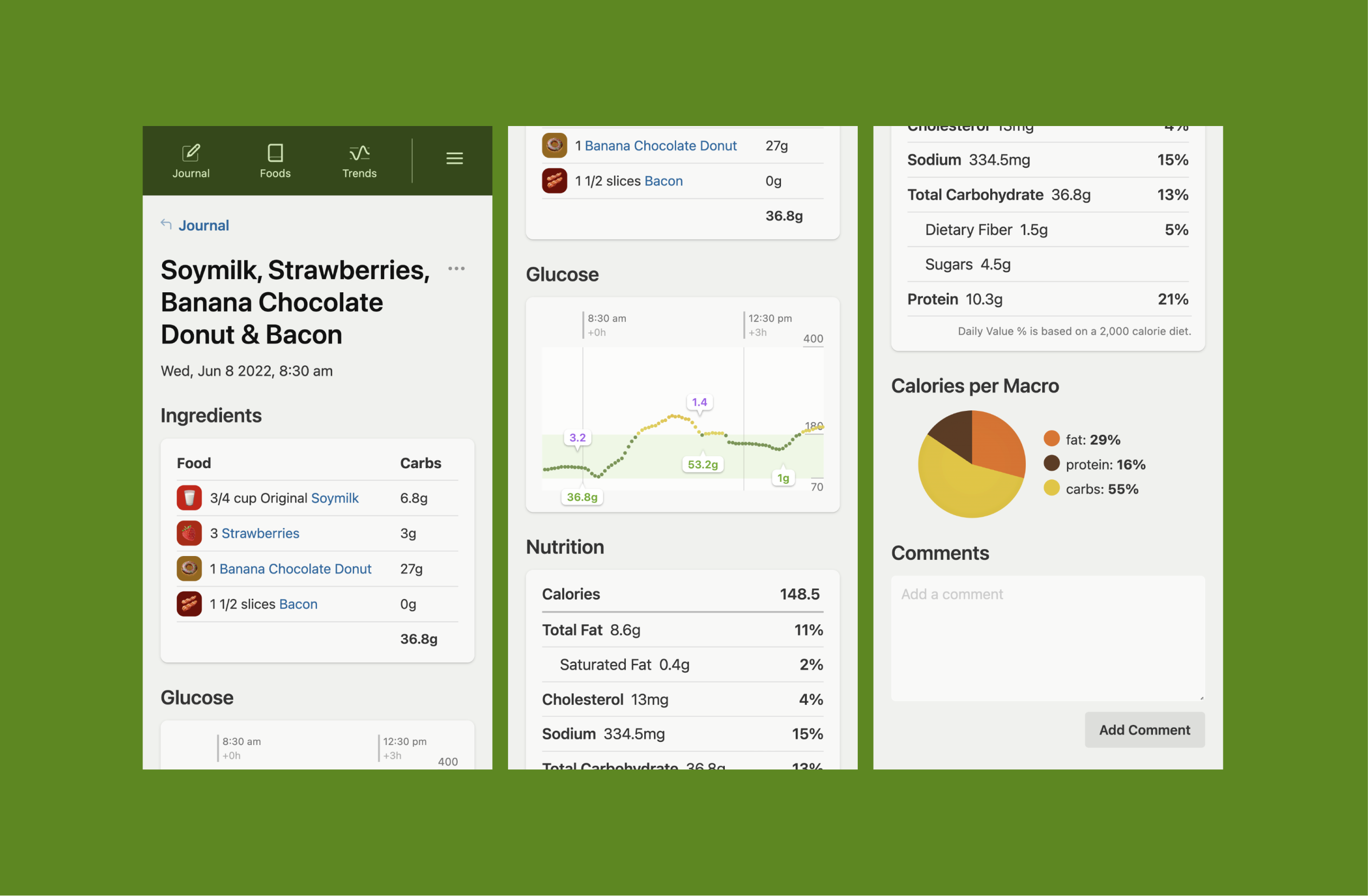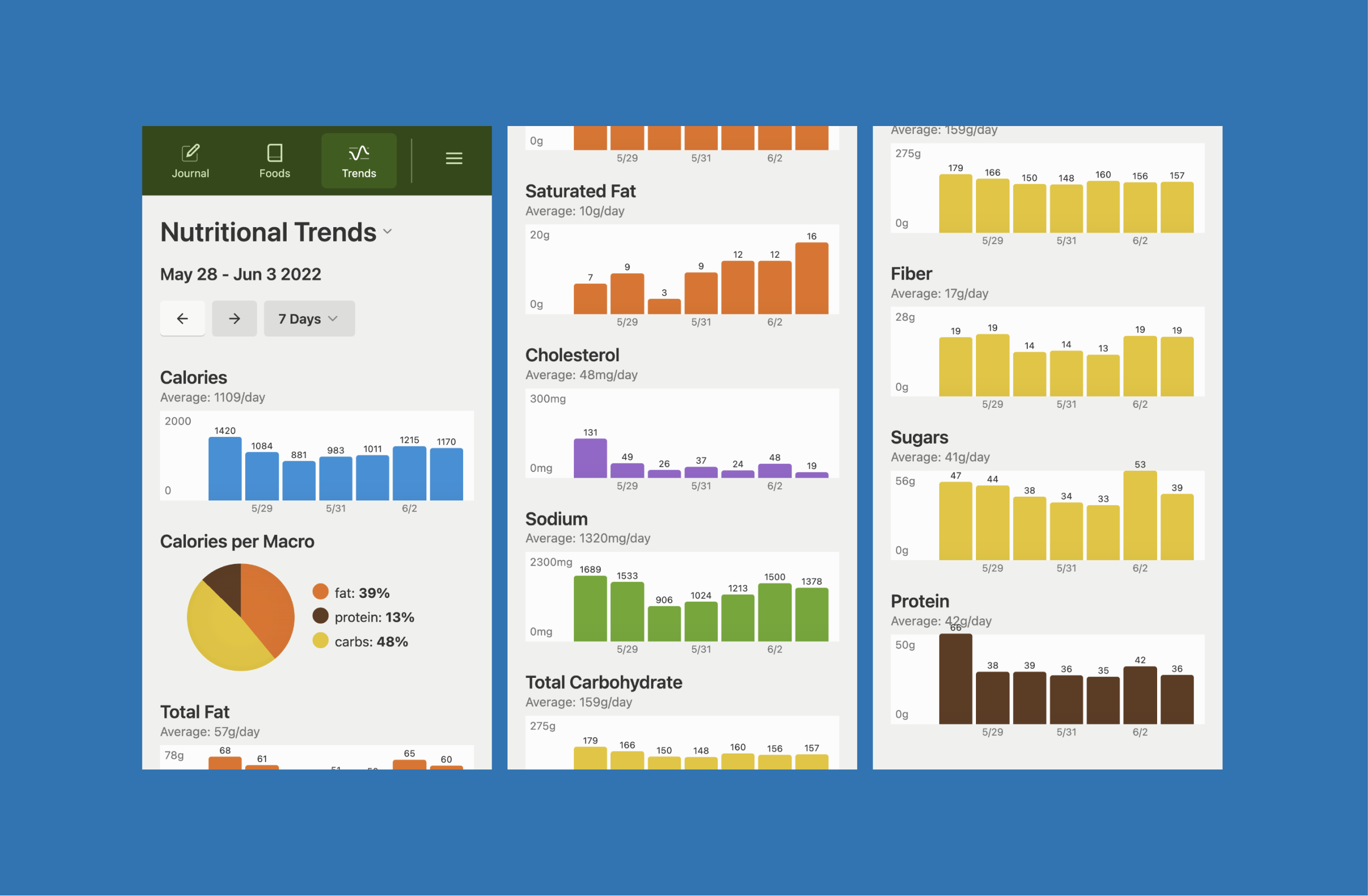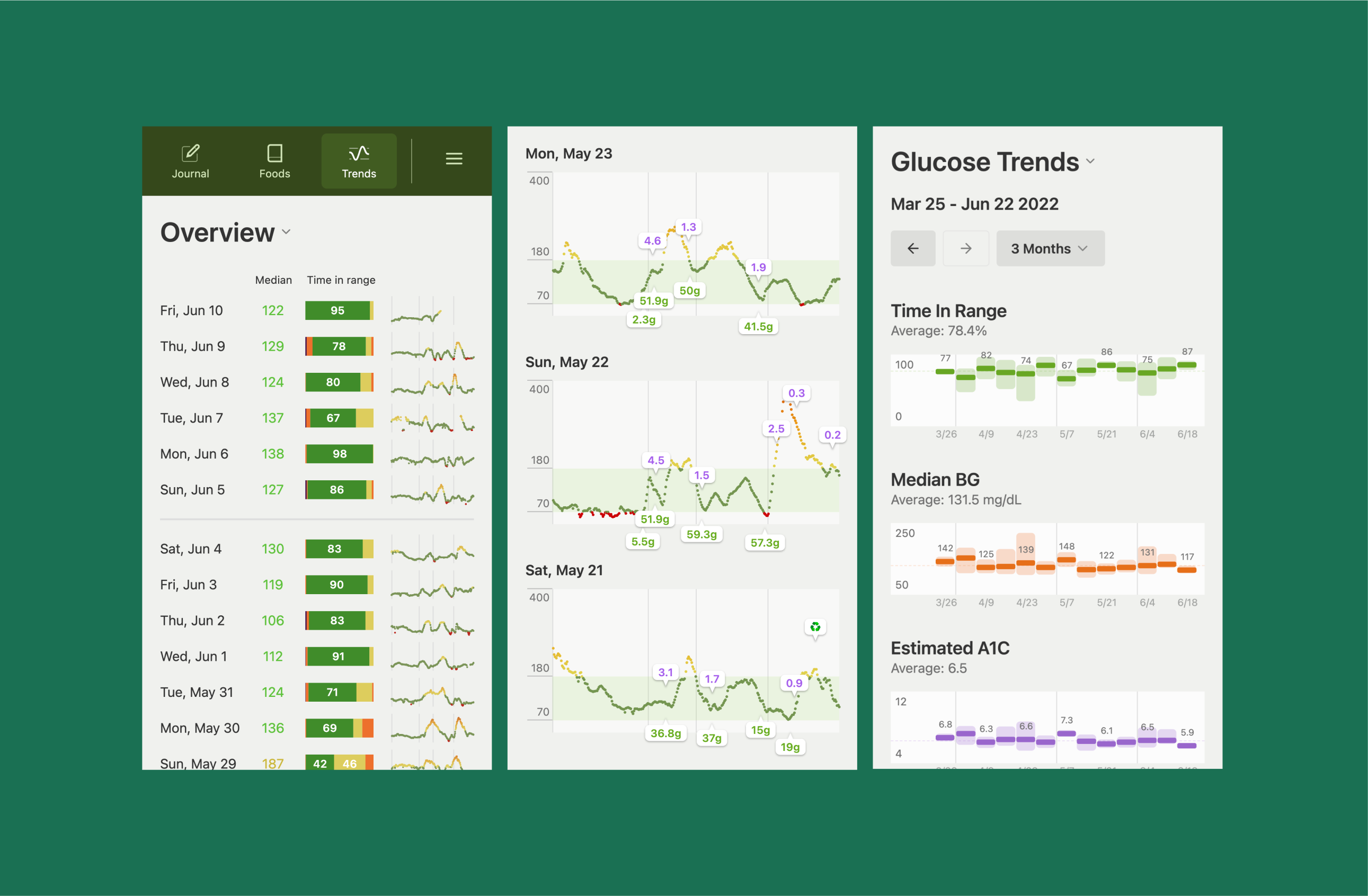Introducing Saltie

Hello! I’d like to introduce Saltie, a new app for diabetes and nutrition management. But first, allow me to share a bit of personal history.
The Backstory
My wife and I have a 6 year old son named Eliot. He’s had food allergies since he was a toddler and was diagnosed with Type 1 diabetes in January of 2021.
When Eliot was diagnosed, we took him to the ER at Hassenfeld Children’s Hospital, in Manhattan. The next day, he was able to be transferred to Hassenfelds’s Pediatric Diabetes Center. There, a team of professionals helped us get through the intense first few days and weeks, and then through the following months as we continued to adjust our son’s protocols and began to find our bearings. They also met with our son’s school principle, teacher, and school nurse to train them on a protocol to keep him safe and healthy at school.
We’re lucky. The center is one of only a handful like it in the country, and they excel at what they do. I can’t imagine going through early onset T1D without professional help, the CGM and insulin pump devices that are available today, as well as being able to afford the health insurance & the insulin necessary to keep Eliot alive. We’re lucky.
A Paper Database
The center asks new patients to fill out a form so that they can make protocol recommendations and adjustments. Despite trying apps and spreadsheets, these forms were the easiest way for us to keep track of our son’s diet and diabetes. And paper has some advantages over apps: paper doesn’t need batteries, software updates, or an internet connection. Sometimes, boring technology is better.
We printed this page out and filled it in every day since last January. The log is over 500 pages, and documents thousands of decisions made. Here is one page, from April of this year:

Diabetes and Diet are Intertwined
Life with diabetes means making hard decisions every day, based on scraps of information from an opaque, complex biological system. There are dozens of factors you can try to uncover, understand, and account for. And despite all of our efforts, a year and a half in, we were still wrong much of the time, for inexplicable reasons.
There are a lot of diabetes apps and a lot of nutritional/diet apps out there. But the reality is that diabetes and diet are intertwined. Since last January I’ve dreamed of some way to connect our diabetes and dietary data together in a way that makes it easier for us to see what’s happening and make better decisions without the constant mental gymnastics and second-guessing.
Making a Change
I’ve been making software professionally for 22 years. 8 years ago, I co-founded the project management software company Shortcut. The company has done well, and I’m lucky to have be able to see it grow from 2 to 70 people, and improve the working lives of thousands of software teams around the world.
Last December, I decided to make a change: to leave my company, take a more active role in helping my wife manage our son’s health and well-being, and build a product that helps us do that - with the assumption that there are others out there that would find it helpful too.
After five months of development, we hit our first milestone: we were able to replace our binder of paper forms with an app. It may not seem like much, but for my wife and I, it means less mental gymnastics and a clean break from an exhausting habit. And we reclaimed some valuable kitchen counter space.
So, what is Saltie? It’s basically three things - a meal journal, a food/recipe library, and data visualizations - all put together to make it easier to make diabetes and nutrition-related decisions.
Ok, four things. Saltie was also designed to be collaborative: an account owner can invite multiple people (e.g. family, caregivers, medical professionals) to their account to view and communicate with each other about what they see, and coach on what to try next time.
Without further ado, let’s take a quick product tour.
The Meal Journal
With over a month of meals added to Saltie, we’re able to look back at previous meals, see how much insulin we gave him, and what effect it had. Adding new meals takes less time and less mental effort than it did before. This alone has made a huge difference for us.
Here’s what a recent meal looks like. We can see ingredients, serving sizes, what it did to his blood glucose levels, how much insulin we gave him, and the nutritional content of the meal. We can also write comments and notes for future reference - on meals, foods, as well as device changes and bolus injections.

A Curated Food & Recipe Library
Another important aspect of our lives is that our son has multiple severe food allergies. Even a small amount of wheat, dairy, eggs, nuts, or sesame will send him into anaphylactic shock. Because of that, my wife makes a lot of allergy-free (and delicious!) baked goods, however calculating the carbs for them has been tedious and error-prone. So another requirement for Saltie was to not just include a food library, but a recipe library, where recipes could be made up of foods and even other recipes, and the nutritional data would be automatically calculated for us.
I think it’s safe to say that a big part of eating right is how much you eat home-cooked vs. takeout. Part of the idea behind Saltie is to make it easier for people with diabetes and dietary restrictions to craft their own recipes and make their own home-cooked meals, and not have to be faced with trying to figure out how to calculate carbs on top of everything else.
Saltie incorporates the USDA’s dataset of 400k branded foods. At the same time, there’s something nice about having a personally curated list of only the foods that matter to you, instead of having to scroll through dozens of similar sounding and verbose food entries, wondering which is the right one.
Here’s what a recipe in Saltie looks like. (These allergy-free pancakes are great, by the way - we make a batch every weekend.)

You may notice something above called a “Carb Multiplier”. Some foods consistently require more insulin than what the carb ratio might tell you. In other apps, to “solve” that, you would likely over-count the carbs to compensate, but that’s not ideal - you lose the ability to see accurate nutritional data, and it’s hard to adjust that with different serving sizes.
Nutritional Trends
One nice bonus of creating a journal that uses full nutritional data is that we’re now able to see an accurate portrait of our son’s nutrition for the first time - and for “free”, since we’re already doing the work to calculate his carbs & insulin.

Diabetes Trends
Saltie also pulls in CGM data from Dexcom and supports a manual upload from the Omnipod Dash. The aim is to present that data in a way that makes long term trends and fluctuations apparent. There are a lot more interesting visualizations to build and interesting questions to answer.
Saltie is a responsive web app, so the visualizations have been designed to be readable across mobile, tablet and desktop devices.

Technical Notes
Like Shortcut before it, Saltie was designed from the ground up to feel surprisingly fast, to overcome the usability deficit of having to use an app in the first place. (People with diabetes have enough apps to deal with, so one more means it better be good.)
I know I said “boring is better” earlier, but there are some exceptions: new technologies like Svelte and services like Vercel have made it possible to build something that combines a modern developer experience with a vanilla.js level of performance. Where many modern apps send 1-2mb of JavaScript across the wire, Saltie sends only 90kb - and that includes the marketing/home page. The app has no client-side dependencies, and cold page loads are responsive within 200ms. What other frameworks give you that kind of a foundation?
Thank you to Rich Harris and the maintainers of Svelte for making the framework that made Saltie possible, and to Guillermo Rauch and the people at Vercel for removing so much friction from the front-end development/ops experience.
Next Steps
Getting this app to be useful for my wife and I was the first milestone. The next milestone is opening the app up to other people living with diabetes, to start to validate the assumption that this might help others too. We’ve had a very encouraging demo with the Hassenfeld Children Hospital’s Pediatric Diabetes Center, so it feels like we’re on the right path.
If Saltie sounds like something you, or someone you know, would find useful, please go to Saltie.app and add your name and info to the waitlist, and we’ll be in touch. If you’re on Twitter, feel free to follow @saltieapp for more updates.
Thanks for reading and for your support.
— Andrew Childs